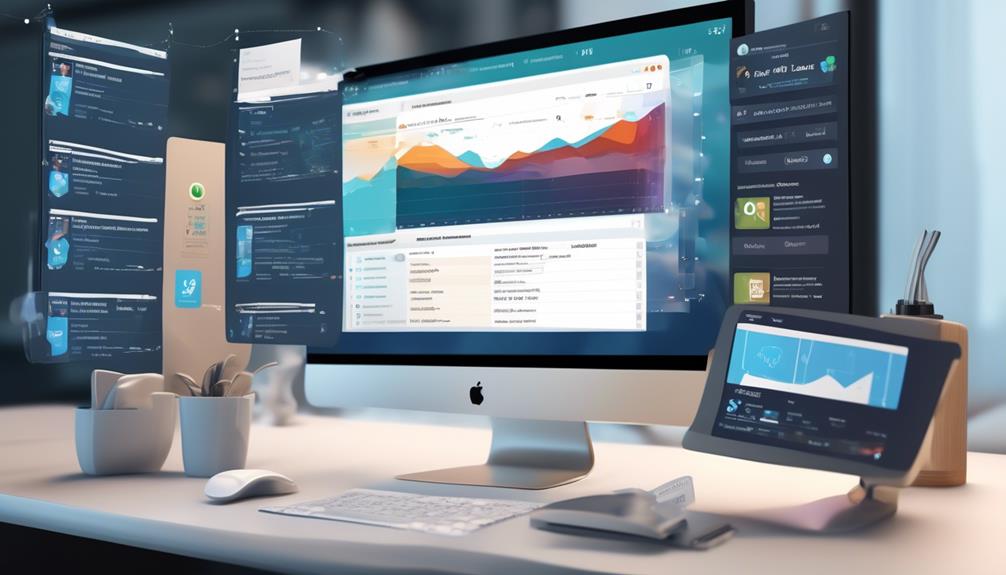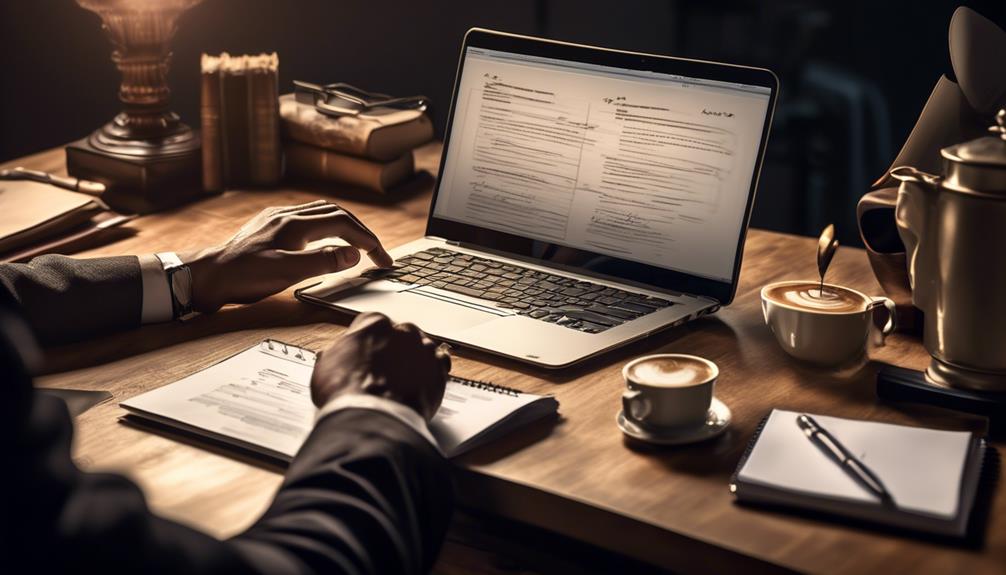Have you ever thought about whether it’s achievable to strike the perfect balance between being assertive and polite in an email?
It's a delicate art that many of us strive to master in our professional communications. As we navigate the nuances of tone and language, we uncover strategies that can help us convey our message assertively yet graciously.
In the following discussion, we'll explore key techniques for crafting emails that are both firm and polite, offering insights that can elevate your communication skills to new heights.
Key Takeaways
- Clear subject line: Select a relevant and concise subject line for your email.
- Set clear expectations: Clearly communicate the purpose, desired outcome, and timeline.
- Use positive language: Enhance professionalism, boost morale, and foster positive relationships.
- Provide constructive feedback: Start positively, address the issue, offer suggestions, and end positively.
Choosing the Right Tone
When composing a firm but polite email, selecting the appropriate tone is crucial for effective communication. The subject line sets the tone for the entire email, so it's vital to choose one that's clear and relevant. Best practices for choosing the right tone include being respectful, concise, and professional.
It's important to strike a balance between assertiveness and politeness to ensure your message is received positively.
In the body of the email, use a direct yet courteous tone. Clearly state your purpose and any necessary information, avoiding unnecessary details that could dilute your message. Keep sentences clear and to the point, maintaining a professional demeanor throughout. Remember to use active voice to convey confidence and assertiveness.
Setting Clear Expectations

As we move forward into discussing 'Setting Clear Expectations' after addressing the importance of choosing the right tone in email communication, it becomes essential to clearly outline the purpose and desired outcomes in a manner that leaves no room for ambiguity.
When setting clear expectations, it is crucial to ensure that the recipient understands the purpose of the email from the subject line. Communication of the desired outcome or action should be explicit to avoid any misunderstandings. Providing a specific timeline or deadline for a response or action sets a clear expectation for promptness. It is also important to be concise and specific in requests or instructions to avoid confusion.
To help you visualize the importance of setting clear expectations, please refer to the table below:
| Expectation | Action Required | Deadline |
|---|---|---|
| Confirm attendance | Please let me know | By Friday, 2 PM |
| Submit project proposal | Make sure to include budget details | By end of the week |
| Provide feedback | Please let me know your thoughts | Within 48 hours |
Using Positive Language
Let's embrace the power of positive language to foster effective and uplifting communication. Using positive language can greatly impact the tone and outcome of our emails. Here are four key reasons why incorporating positive language is essential:
- Enhances Professionalism: By using positive language, we can maintain a professional and respectful tone in our emails, regardless of the situation.
- Boosts Morale: Positive language has the ability to uplift the spirits of both the sender and the recipient, creating a more pleasant exchange overall.
- Encourages Collaboration: Positive language can encourage a collaborative atmosphere, making it easier to work together towards common goals.
- Fosters Stronger Relationships: By infusing positivity into our emails, we can strengthen professional relationships and build rapport over time.
With years of experience in communication, I'd love to emphasize the significant impact positive language can have on our career paths. Let's strive to incorporate positivity into our emails for more effective and harmonious communication.
Providing Constructive Feedback

Our approach to providing feedback should aim to be constructive and supportive, fostering growth and improvement.
When giving feedback, it's essential to start by acknowledging the recipient. Begin by saying something like, 'I hope this message finds you well.' This sets a positive tone for the conversation.
Next, clearly state what went wrong or needs improvement. Be specific and provide examples to help the recipient understand the issue. For instance, you could say, 'During the presentation, there were some points that were unclear and could be further developed.'
After addressing the areas that need improvement, offer suggestions for how the recipient can enhance their performance.
End the feedback on a positive note, expressing confidence in the recipient's ability to make the necessary improvements.
Ending Gracefully
We appreciate your attention to detail and professionalism in our communication. When ending a firm but polite email, it's crucial to leave a lasting impression. Here are four essential tips for ending gracefully:
- Polite Closing Statement: End your email with a polite and professional closing statement that reflects the tone of your message.
- Express Gratitude: Always express gratitude for the recipient's time and consideration in reading your email.
- Offer Assistance: If necessary, offer assistance or provide additional information to help the recipient with any inquiries they may have.
- Anticipate Response: Express anticipation for a response or further communication to keep the conversation open and encourage a reply.
Remember to choose a closing salutation that aligns with the level of formality you wish to maintain.
Ending your email gracefully sets a positive tone for future interactions. Whether it's morning, afternoon, or evening, these practices ensure your communication concludes on a courteous note.
Frequently Asked Questions
How Do You Address a Firm in an Email?
When addressing a firm in an email, we typically use a formal salutation such as 'Dear [Firm Name]'. It's important to maintain a professional tone throughout the email, ensuring clarity and respect.
Remember to address the recipient by their proper title and use polite language to convey your message effectively. Additionally, be concise and to the point while remaining courteous in your communication.
How Do You Write a Friendly but Professional Email?
When writing a friendly yet professional email, we aim to strike a balance between warmth and formality.
Our tone should be respectful and courteous while still conveying our message effectively.
It's crucial to use polite language, proper grammar, and a friendly greeting to set the right tone.
How Do You Sound Firm in an Email?
When sounding firm in an email, we make sure to use clear and assertive language. It's important to be direct and concise without added fluff. We avoid emotional or confrontational wording that could escalate tensions.
Keeping a professional and respectful tone throughout is key. Offering solutions or suggestions shows a willingness to collaborate. These strategies help convey firmness while maintaining a polite and professional demeanor in our emails.
How Do You Write a Formal Polite Email?
When writing a formal polite email, we make sure to maintain a respectful tone. We aim to be clear and concise while showing gratitude and offering assistance where needed.
It's important to consider the recipient's preferences and set a specific goal for the email. Softening phrases can help convey our message firmly yet politely.
Does Writing a Firm but Polite Email to a Shipping Company Help in Resolving Issues?
When dealing with shipping issues, writing a firm but polite email to the shipping company can be very helpful. Clearly explaining the problem and requesting a resolution is key. By using a respectful tone and providing necessary details, you are more likely to receive a prompt and satisfactory response from the shipping company.
Conclusion
In the world of email communication, striking the perfect balance between firmness and politeness is key. By choosing the right tone, setting clear expectations, using positive language, providing constructive feedback, and ending gracefully, you can effectively convey your message while maintaining professionalism and respect.
Remember, a well-crafted email can leave a lasting impression, so make sure to put in the effort to communicate effectively and thoughtfully.










